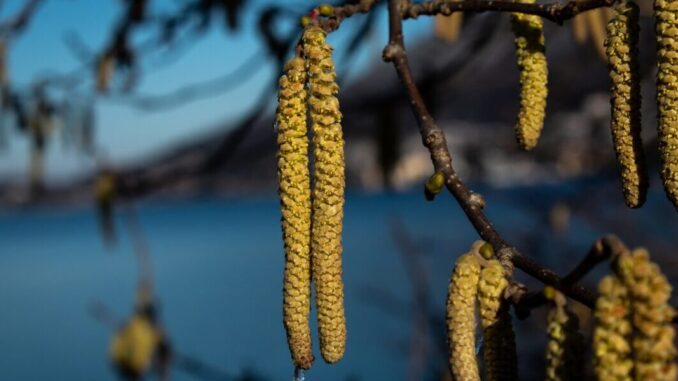
Winter still controls many places in Switzerland, but the first people suffering from hay fever are already complaining of allergic reactions. And, indeed, hazel already blooms in sunny places. You should contact your doctor if you are wondering if your cold is due to pollen or coronavirus. In case of pollen allergy, aha! Swiss Allergy Center recommends taking your medication on time.
People allergic to pollen have noticed: hazel pollen is already in the air here and there, even if winter temperatures are back. "We receive requests from very surprised people concerned: they can't believe that they already have hay fever now – and think, of course, often of a coronavirus infection," says Roxane Guillod, deputy head of specialist services at aha! Swiss Allergy Center. Because a cold can both indicate a pollen allergy just like COVID-19. The other disorders are atypical for the disease due to the coronavirus: "Attacks of sneezing, prurite, watery and reddened eyes as well as itching in the palate, nose and ears indicate an allergy," explains the expert. Whoever doubts should call his doctor.
Locally, hazel pollen flies away
Hazel is not very difficult: a little sun and temperatures above five degrees Celsius are enough for it to bloom. Weather conditions that may very well present themselves in some regions of Switzerland in the coming days: "In the middle, in particularly sunny places, sheltered from the wind, it will be warm enough for the flowering of hazel kittens," confirms biometeorologist Regula Gehrig of MeteoSwiss. "Hazel pollen can therefore be found in the air, even if only in low concentrations." With the exception of Ticino where the temperature remains spring, which means that the pollen concentration will be even moderate to high, as has been the case since the beginning of the year. High concentrations of hazel pollen have been measured in Lugano since 31 December. At the beginning of the year, measuring stations on the northern slopes of the Alps showed low to moderate concentrations of hazel and alder pollen. A flowering in early January of hazel is certainly early, but is recorded from time to time.
The pollen storm is yet to come
However, the low temperatures still prevent hazel trees from waking up throughout Switzerland. "Only when the temperatures in the sun are a little higher, above about 7 degrees, will hazel and alder trees release greater amounts of pollen," adds Regula Gehrig of MeteoSwiss. Allergy sufferers should find out about current pollen forecasts using the free "Pollen-News" app. From now on, they can also create a personal pollen alert message (Pollen-Push): they are immediately informed of any change in the concentration of the selected pollen type.
Medicines and masks are allies
Generally speaking, people who are allergic to pollen should avoid exposure to pollen and have at hand the medications prescribed by their doctor, usually antihistamines. And finally: hygiene masks also help against pollen. "Even the smallest pollen grains can't get through the textile layers of the mask," says allergy expert Roxane Guillod.
Current pollen data and forecasts
– Current pollen concentrations on www.pollenetallergie.ch and mobile with the"Pollen-News"application (in App Store and Google Play)
– Free brochures"Pollen allergy","Pollen guide"and"Specific immunotherapy"
Via PressePortal – Source and details



Be the first to comment